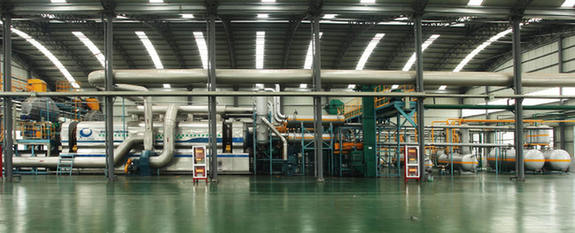Nation Rises after 65 Years of Development
By LI LI
One needs look no further than China’s railways to observe the country’s enormous development since its foundation on October 1, 1949.
On the 65th anniversary of that formative moment, every Chinese citizen had access to a modern train service. In 1949, the nation had only 22,000 km of railways, and half of the track was in poor condition.
By 2013, however, this had expanded to 100,000 km. More than 10,000 km was high-speed infrastructure, with 12,000 km under construction.
This modernization is transforming the lives of Chinese people. For example, the wish of Tsering Dekyi from Xigaze, some 200 km west of Lhasa in southwest China’s Tibet, has long been for his children to receive better education in schools far distant from their remote home. It is no longer a dream.
“I’ve heard that the trains are fast and safe. It takes only two hours from here to Lhasa. I really hope that in future my three children can go by train to schools in Lhasa or inland cities,” Tsering Dekyi said.
This is now possible after the extension last August of the Qinghai-Tibet Railway linking Xigaze and Lhasa went into operation.
The Qinghai-Tibet Railway, the world’s highest plateau rail track launched in 2006, also enables Xigaze locals to travel even further afield to major cities like Beijing and Shanghai.
Train track mileage is not the only item signifying positive changes in China since 1949. In 2010, China overtook Japan to become the world’s second-largest economy. China is now the world’s top goods trader, and the nation ranks third in global investment.
Meanwhile, the 2014 APEC Economic Leaders’ Meeting convenes in Beijing in November. Leaders will gather in the Chinese capital to discuss important economic issues in the Asia-Pacific region. China will take center stage once more.
In addition to its immense economic achievements, especially since the reform and opening-up policy came into effect in 1978, the nation has also made unprecedented strides in providing its 1.3 billion — the world’s largest — population with fundamental education and welfare.
Sixty-five years ago, 80 percent of the population was illiterate. By 2008, free nine-year compulsory education programs were in force throughout the country. This year, 7.27 million university students will graduate, signifying a historical high.
The government budget also allocates billions of yuan every year to providing students from poor families with nutritious meals.
About 32.29 million rural students have benefited from the RMB 46.23 billion (US $7.52 billion) central government subsidy since 2011, when it first launched the improved nutrition program. Also, the more than 10 million university students who received student loans under programs in force since 1999 have now completed their studies.
The 660 million people China has lifted out of poverty since 1981 account for more than 70 percent of the world’s total.
Meanwhile, the Chinese government has endeavored to provide basic healthcare for its people. As of 2011, more than 95 percent of the population was covered by various healthcare programs.
Problems, however, also feature among these achievements and must be dealt with as a matter of urgency. They include constraints on future development due to environmental concerns and depleted resources, a widening gap between the poor and the well-off, industrial overcapacity, and imbalanced regional development.
Meanwhile, the Chinese economy must also brave challenges arising from an economic slowdown in the wake of the previous decade’s boom. Employment and structural control are key items on the government’s agenda.
In meeting these challenges, the Chinese leadership has shown political courage by pushing comprehensive reforms, notably fighting corruption. Overhauls of administrative management and fiscal and financial systems are also steadily underway.
There is no doubting the truth of Chinese President Xi Jinping’s assertion that today’s China is nearer to its great goal of rejuvenation than at any period in history.
(Source: Xinhua)

